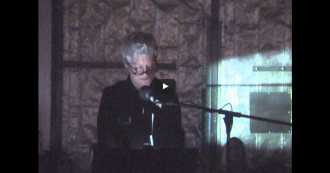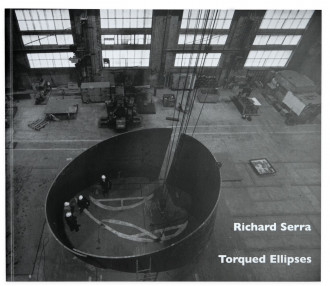Richard Serra
Long-term view, Dia Beacon
Overview
Richard Serra has consistently and rigorously probed issues fundamental to sculpture over a career now spanning nearly six decades. In the late 1960s he introduced “process” into his sculptural practice by making explicit the means of his production. Between 1967 and 1968 Serra penned a list of transitive verbs, which he applied to new and innovative materials to make sculptures. Serra’s Scatter Piece (1968) is an example of this, consisting of rubber strips randomly distributed throughout the gallery. Serra’s work is on long-term view across five galleries at Dia Beacon.
Throughout his career, Serra’s work engaged with “ways of relating movement to material and space.” These concerns remained central to the steel sculptures he made in the 1990s and early 2000s. Ranging from Elevation Wedge (2001), a ramp that subtly inclines the floor of the gallery, to his monumental Torqued Ellipses series, these large installations of contorted steel plates elaborate concerns with orientation and movement, destabilizing our experience of space as we attempt to comprehend each sculptural volume. They are part of Serra’s investigation into the embodied experience of perception.
Richard Serra’s Torqued Ellipses elaborate concerns with orientation and movement, destabilizing our experience of space as we attempt to comprehend each sculptural volume. Beguiling and unpredictable, Serra’s sculptures are meant to be examined in motion, forcing the viewer to become a wanderer. As a young artist, Serra was strongly affected by contemporary dance, which prompted him, he has said, to consider “ways of relating movement to material and space.” It allowed him “to think about sculpture in an open and extended field. . . . I found very important the idea of the body passing through space, and the body’s movement not being predicated totally on image or sight or optical awareness, but on physical awareness in relation to space, place, time, movement.”
Inspired by the curved shapes of Italian architect Francesco Borromini’s church of San Carlo alle Quattro Fontane (1646) in Rome, which he had visited in the early 1990s, Serra decided to take an elliptical volume and torque—or twist—it. He experimented with small twin wooden ellipses rotated in different directions and held together by a dowel. This led to a template that he cut and rolled in lead. He gradually assembled some thirty models, and using computer technology, calculated how to bend sheets of steel according to these maquettes. The sculptures were cut and fabricated using a rare steel-bending machine of large proportions, normally intended for the construction of battleships.
Serra’s presentation at Dia:Beacon includes examples of all the variants within his typology of torqued sculptures: one is gently twisted; another is dramatically re-formed so that the overhang extends out some five feet; the third, a double ellipse, allows the inner chamber to be separated from the exterior by a disorienting corridor that unpredictably narrows or opens as it weaves its circuitous path; but even more labyrinthine and baroque is the latest in the group, 2000 (2000), a torqued spiral. In following the exteriors of the sculptures, the viewer is always close to the steel plates, which are snugly situated in a gallery that was a railway depot when Dia:Beacon was a factory. This sets up a tension between bodily awareness and vision. Inside the works, the opposite of what is occurring at one’s feet seems to be happening over one’s head: the viewer’s movements and responses are not exclusively governed by sight. Though the motion of the walls leading into these works is arguably even more difficult to follow visually than are the exterior modulations, only inside the sculpture can one grasp its footprint and upper profile. The upper and lower edges of each sheet form perfect ellipses, which never align but angle one to the other. The result of this operation is in each case a dynamic volume—an empty chapel, reminiscent of Borromini’s model—that the viewer can traverse, but never entirely grasp.
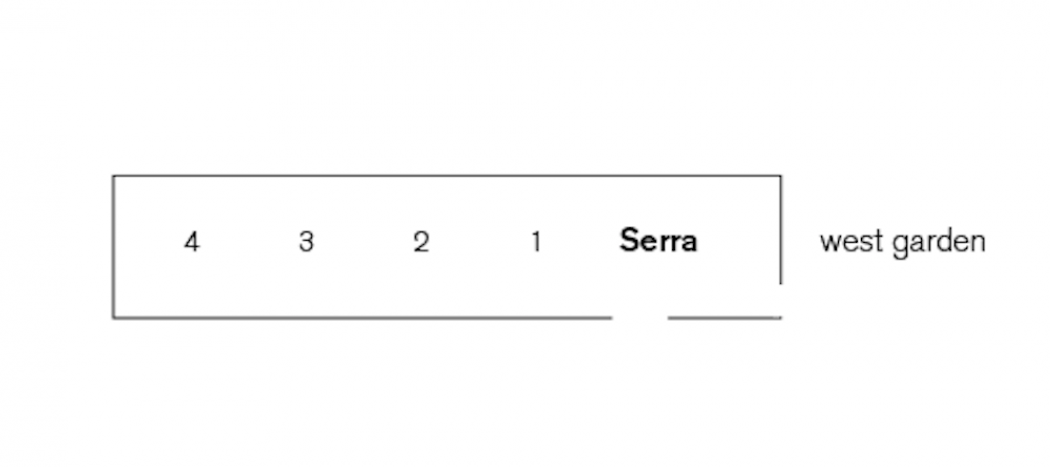
- Torqued Ellipse II, 1996
Weatherproof steel
Dia Art Foundation; Gift of Louise and Leonard Riggio
- Double Torqued Ellipse, 1997
Weatherproof steel
Dia Art Foundation; Gift of Louise and Leonard Riggio
- Torqued Ellipse I, 1996
Weatherproof steel
Dia Art Foundation; Gift of Louise and Leonard Riggio
- 2000, 2000
Weatherproof steel
Dia Art Foundation; Gift of Louise and Leonard Riggio
Richard Serra has consistently and rigorously probed issues fundamental to sculpture over a career now spanning almost five decades. As a young artist in New York City in the late 1960s, he was strongly affected by the work of a number of contemporary dancers, which prompted him to consider “ways of relating movement to material and space.” Preoccupied with the ways in which space is experienced by the body’s movement over time, Serra created environments in which “we sense volume before we can articulate it.”
Union of the Torus and the Sphere (2001) manifests these concerns in an environmentally scaled, closed form for the first time. Two steel plates, one a section of a torus–a large convex molding, traditionally located at the base of a classical column–the other a section of a sphere, have been abutted to create a single, free-standing volume. Its sides curving in seemingly opposed directions, this monumental form requires the viewer to walk around and scrutinize it in order to comprehend its unfamiliar identity. Reminiscent of the hull of a ship, this vast torqued volume reveals itself only slowly and from multiple viewing positions. This journey proves destabilizing, even disorienting, prompting a new spatial attentiveness on the part of the viewer.
Consequence (2003) develops this inquiry in a work devised specifically for its site. A two-part drawing on linen, it establishes a precarious balance between two elements that, although identical, feel different in dimension and weight due to their placement on the walls. In concert with the viewer’s movement through the gallery, the space seems to compress, contract, and then release. Elevational Wedge (2001) similarly remaps the relationship of object to ground by counterbalancing the gentle sloping of the gallery floor with a level horizontal plane.
Scatter Piece (1967), a key early work in Serra’s oeuvre, was initially shown in the landmark 1968 group exhibition 9 at Leo Castelli at the Castelli Warehouse, which marked a transition toward a more process-based method, whereby the character and identity of the material itself largely determined the final form of the piece. To create this work, Serra first poured rubber in layers to form long, narrow, pliable strips. He then scattered the strips across the floor, charting the shifting elevations of the unruly piles and heaps with a taut line suspended some eight inches off the ground. This linear mark establishes an implicit horizontal plane within the undulating dispersed mass. Although in a very different guise, it prefigures the dialogical premise underpinning Elevational Wedge.

1. Consequence, 2003
Paintstik on linen
Dia Art Foundation
2. Union of the Torus and the Sphere, 2001
Weatherproof steel
Dia Art Foundation
3. Elevational Wedge, 2001
Hot-rolled steel
Dia Art Foundation; Gift of Louise and Leonard Riggio
4. Scatter Piece, 1967
Rubber latex, metal rods, and rubber-covered wire
Dia Art Foundation; Gift of Christie’s
Richard Serra was born in San Francisco in 1938. After graduating in 1961 with a degree in English from the University of California, Santa Barbara, he studied art at Yale University until 1964, where he took classes with his future collaborator Josef Albers, among others. Serra spent two years traveling in Europe before settling in 1966 in New York City, where he continues to live and work. He began to show his work in museums and galleries in New York in 1967, and since then he has exhibited extensively throughout the world, including representation in the 1972, 1977, 1982, and 1987 Documentas in Kassel, Germany, the 1980, 1984, 2001, and 2013 Venice Biennales, and multiple editions of the Whitney Biennial, New York. Retrospectives of Serra’s work have been organized by the Museum of Contemporary Art, Los Angeles (1998), and the Museum of Modern Art, New York (1986 and 2007). He has also created numerous site-specific sculptures in public and private venues in both North America and Europe. In 1997 Serra’s first Torqued Ellipses were presented at Dia Center for the Arts, New York.
Artist
Richard Serra
(1938–2024)
Richard Serra was born in San Francisco in 1938. He died in Orient, New York, in 2024.
Selected Works on View
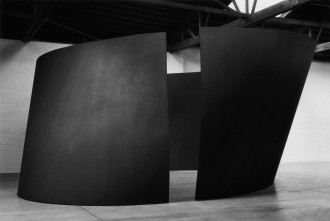
Richard Serra
Torqued Ellipse I, 1996
Go to Torqued Ellipse I page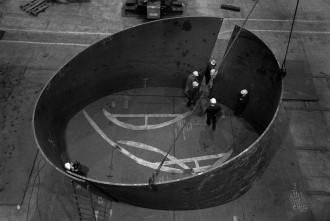
Richard Serra
Torqued Ellipse II, 1996
Go to Torqued Ellipse II page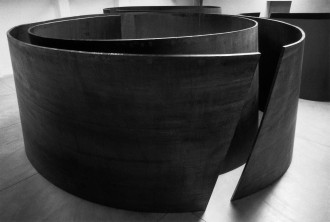
Richard Serra
Double Torqued Ellipse, 1997
Go to Double Torqued Ellipse page
Richard Serra
Union of the Torus and the Sphere, 2001
Go to Union of the Torus and the Sphere page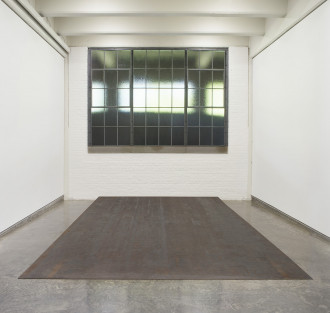
Richard Serra
Elevational Wedge, 2001
Go to Elevational Wedge page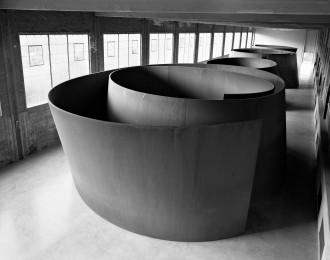
Richard Serra
2000, 2000
Go to 2000 page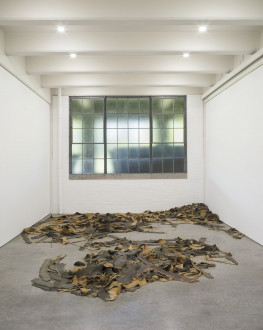
Richard Serra
Scatter Piece, 1967
Go to Scatter Piece page
Richard Serra
Consequence, 2003
Go to Consequence pageBooks
Richard Serra: Torqued Ellipses
This catalogue captures the extraordinary first installation of the Torqued Ellipses by Richard Serra at Dia in September 1997.
Explore
Ann Hamilton on Richard Serra
Move to Ann Hamilton on Richard Serra page